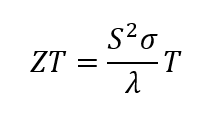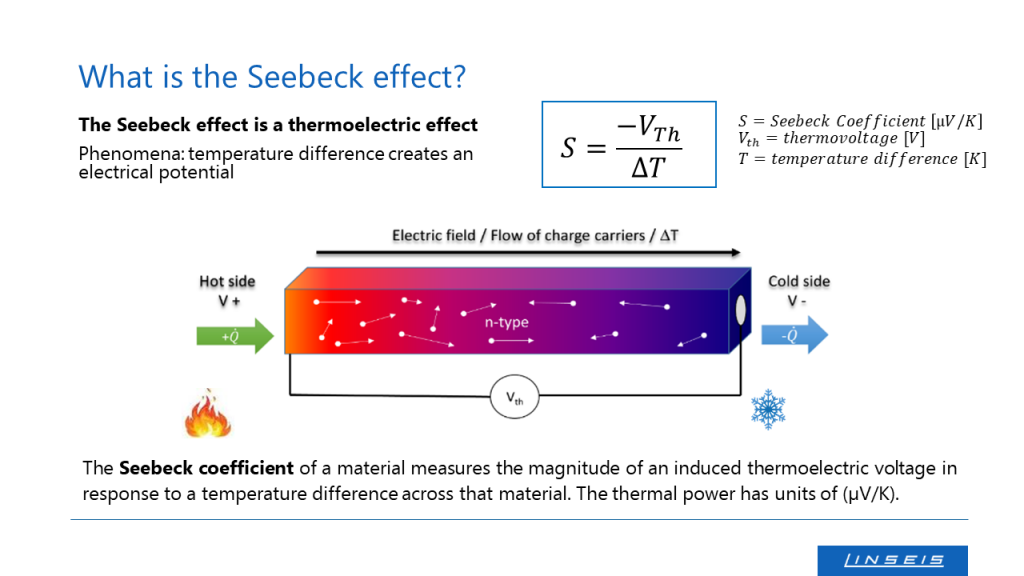Seebeck coefficient
Seebeck coefficient – a thermophysical measured variable
The Seebeck effect is mainly used for measuring temperatures with thermocouples and is becoming increasingly important in the conversion of waste heat into electrical energy using thermoelectric generators. The processes are reversible. The reverse process, in which voltage differences generate temperature differences, is the Peltier effect, which is used for cooling in microelectronics and nanotechnology.
A key measure for evaluating the efficiency of thermoelectric materials is the figure of merit ZT, a dimensionless number that describes the performance of a material. The ZT value increases with the square of the Seebeck coefficient, the average absolute operating temperature and the electrical conductivity, while it decreases with the specific thermal conductivity. These quantities are temperature dependent, and the material properties must be included as a function of temperature in the calculation of the figure of merit. The definition equation is:

Precise measuring instruments, such as those offered by Linseis, are used to measure the required material properties to determine the ZT value of electrical conductors and semiconductors. If the temperature difference is small and the Seebeck coefficients can be considered constant, the voltage formula simplifies to:

where SA and SB are the Seebeck coefficients of the two materials, and T1 and T2 are the temperatures at the two contact points. The voltage is generated by thermal diffusion, in which high-energy electrons diffuse from the warm contact point towards the cooler conductor. This results in a constant electron transport from the positive to the negative conductor, whereby heat energy is also transferred in addition to the electrical energy. However, this heat transfer reduces the efficiency of the Seebeck effect.
The efficiency of a thermocouple is higher the greater the electrical conductivity and the lower the thermal conductivity of the material used. A decisive criterion for the properties of a thermoelectric conductor is the so-called “figure of merit” (ZT). This figure of merit already takes into account all relevant quantities such as temperature, the Seebeck coefficient, the thermal conductivity and the electrical conductivity.
In the technical application of thermocouples, two mechanisms work together to generate a measurable voltage. On the one hand, a temperature gradient causes a diffusion of the charge carriers from the warm to the cold end of the conductor, which leads to a voltage in the millivolt range and depends on the Seebeck coefficient. On the other hand, the use of a second conductor made of a different material creates a further voltage gradient at the point of contact, since the two materials have different Seebeck coefficients.
Free webinar about thermoelectric materials

You are working in the field of analysis of thermoelectric materials and would like to learn more about the determination of the Seebeck effect and others?
